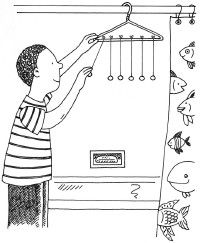Science Projects for Kids: Producing Sounds introduces kids to the science of noise. We all take sound for granted and few of us ever stop to wonder how sound really works. These simple and fun science projects for kids will help kids -- and parents -- start to understand the fascinating process behind sound.
Start learning about the science of sound with these fun and easy projects:
Advertisement
Find out how sound travels from molecule to molecule.
With some string and a couple of plastic containers, discover how sound travels to a telephone.
Learn how the volume of water and air in a bottle produces various sounds.
Stop sound waves in their tracks with these simple science project.
Go to the next page to start experimenting with sound waves.
For more science projects for kids, check out:
Advertisement

